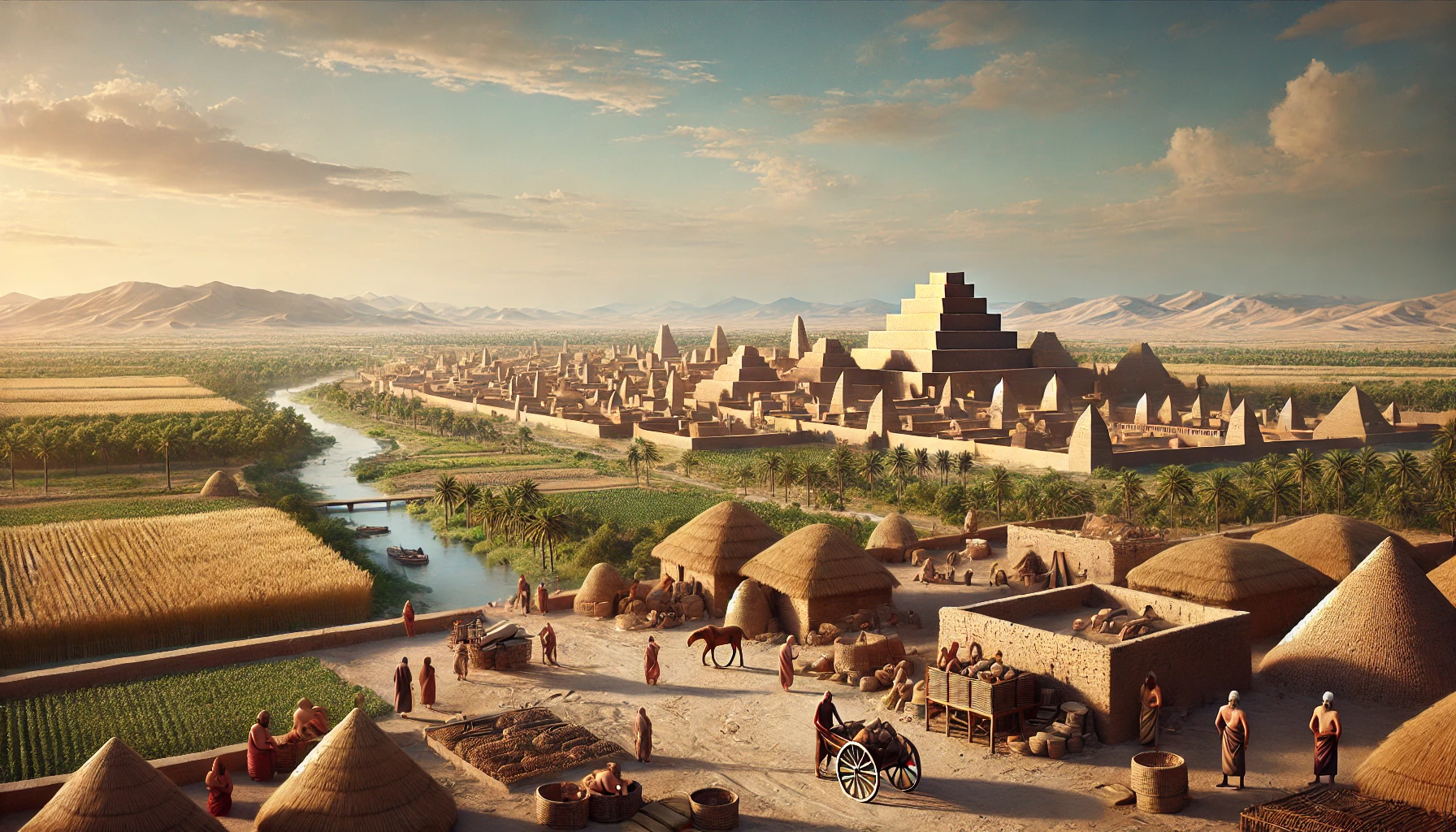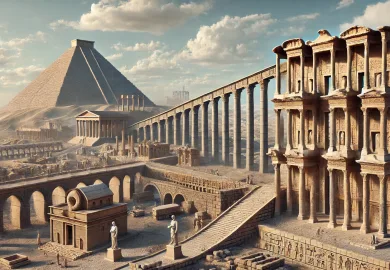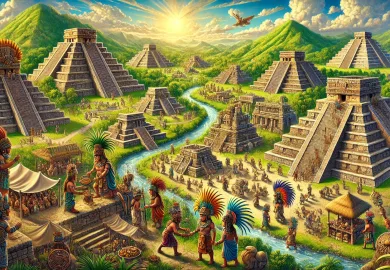
The Sumerian civilization, one of the earliest and most influential in human history, emerged in the fertile plains of Mesopotamia around 4500 B.C. and thrived until approximately 1900 B.C. This civilization, located between the Tigris and Euphrates rivers, is often hailed as the cradle of civilization due to its remarkable contributions to the development of human culture, society, and technology. From the invention of writing to the construction of awe-inspiring ziggurats, the Sumerians left an indelible mark on the world that continues to fascinate scholars and history enthusiasts alike.
The Birth of Sumerian Civilization: A Historical Overview
The Sumerian civilization arose during a time when humans were transitioning from nomadic lifestyles to settled agricultural communities. The fertile crescent of Mesopotamia provided an ideal environment for farming, leading to the establishment of some of the world’s first cities, including Uruk, Ur, and Eridu. These cities became the heart of Sumerian culture, each serving as a center of administration, religion, and trade.
The Sumerians were pioneers in many aspects of civilization. They developed an early form of government with city-states, each governed by its own ruler, often referred to as a “lugal” or king. These rulers were not just political leaders but also played a significant role in religious activities, acting as intermediaries between the gods and the people. The concept of kingship and the divine right to rule were integral to the Sumerian political system.
The Sumerians also made significant advancements in agriculture, which was the backbone of their economy. They mastered irrigation techniques, constructing canals and dikes to control the flow of the Tigris and Euphrates rivers. This allowed them to produce surplus crops, which supported a growing population and facilitated trade with neighboring regions. The surplus also gave rise to a class of artisans and merchants, further enhancing the complexity of Sumerian society.
Sumerian Contributions to Writing and Record-Keeping
One of the most significant contributions of the Sumerian civilization to human history is the invention of writing. Around 3200 B.C., the Sumerians developed cuneiform, one of the earliest known writing systems. Cuneiform began as a series of pictographs used to represent objects and ideas but eventually evolved into a complex system of wedge-shaped symbols inscribed on clay tablets.
The invention of writing was primarily driven by the need to keep records. As Sumerian society became more complex, the need to document transactions, legal codes, and religious texts became increasingly important. Scribes, who were highly respected members of society, were trained in the art of writing and were responsible for maintaining these records.
Cuneiform was not limited to administrative purposes; it also played a crucial role in preserving Sumerian literature and religious beliefs. The most famous piece of Sumerian literature is the “Epic of Gilgamesh,” a poem that tells the story of a heroic king’s quest for immortality. This epic, inscribed on clay tablets, is considered one of the earliest masterpieces of world literature and provides valuable insights into Sumerian views on life, death, and the divine.
The Role of Religion and Mythology in Sumerian Culture
Religion was at the core of Sumerian life, influencing nearly every aspect of their society. The Sumerians were polytheistic, worshipping a pantheon of gods and goddesses who they believed controlled all aspects of the natural world and human life. Each city-state had its patron deity, and the most important of these gods included Anu, the sky god; Enlil, the god of air and storms; and Inanna, the goddess of love and war.
The Sumerians believed that the gods were anthropomorphic, possessing human-like qualities and emotions. They saw their deities as powerful beings who required constant worship and appeasement to ensure their favor. Temples, known as ziggurats, were constructed in honor of the gods and served as the focal points of religious life. These massive, tiered structures were believed to connect heaven and earth, and only priests and select officials were allowed to enter the sacred spaces at the top.
Sumerian mythology is rich and complex, with numerous myths that explain the creation of the world, the origins of humanity, and the workings of the universe. These myths were passed down orally and later recorded in cuneiform on clay tablets. One of the most famous myths is the “Enuma Elish,” which describes the creation of the world and the rise of the god Marduk to supremacy. Sumerian religion and mythology not only shaped their worldview but also influenced later civilizations, including the Babylonians and Assyrians.
Sumerian Art, Architecture, and Daily Life
The Sumerians were not only great thinkers and writers but also skilled artists and architects. Their artistic achievements can be seen in the intricate carvings, sculptures, and pottery that have been unearthed from archaeological sites across Mesopotamia. These artifacts often depict religious themes, daily activities, and scenes of war, providing a glimpse into the lives of the Sumerian people.
One of the most iconic examples of Sumerian art is the Standard of Ur, a beautifully crafted wooden box inlaid with lapis lazuli, shell, and red limestone. The Standard of Ur depicts scenes of war on one side and scenes of peace and prosperity on the other, illustrating the dual aspects of Sumerian society. Other notable examples of Sumerian art include cylinder seals, which were used to authenticate documents and protect property. These small, intricately carved stones were rolled over wet clay to create a unique impression, often featuring scenes of gods, animals, and mythological creatures.
Sumerian architecture was equally impressive, with the ziggurat being the most famous example. These massive structures, made of mud bricks, were built to honor the gods and were the centerpieces of Sumerian cities. The ziggurat at Ur, dedicated to the moon god Nanna, is one of the best-preserved examples and provides insight into the engineering skills of the Sumerians.
Daily life in Sumer was centered around the family and the community. The Sumerians lived in modest homes made of mud-brick, with larger, more elaborate houses belonging to the wealthy and powerful. Agriculture was the primary occupation, but there were also artisans, merchants, and priests who played important roles in society. Social hierarchy was well-defined, with a clear division between the ruling class, free citizens, and slaves.
Women in Sumerian society had certain rights and could own property, engage in business, and even become priestesses. However, their roles were primarily domestic, and they were expected to manage the household and raise children. Education was reserved for the elite, with boys from wealthy families being trained as scribes or priests.
The Decline of the Sumerian Civilization and Its Legacy
The decline of the Sumerian civilization began around 2000 B.C., as internal conflicts, environmental changes, and invasions by neighboring peoples weakened the city-states. The rise of the Akkadian Empire under Sargon the Great marked the beginning of the end for the Sumerians, as the Akkadians gradually absorbed Sumerian culture and territory. Despite this, the Sumerians left a lasting legacy that continued to influence subsequent civilizations in Mesopotamia and beyond.
The Sumerians’ contributions to writing, law, religion, and architecture laid the foundation for many aspects of Western civilization. Their innovations in irrigation and agriculture allowed for the growth of cities and the development of complex societies. The concept of kingship, with its divine mandate, would be adopted by later empires, and the Sumerian pantheon of gods would be integrated into the religious systems of the Babylonians and Assyrians.
Even after the fall of their civilization, the Sumerians’ influence persisted through their literature, particularly the Epic of Gilgamesh, which has been studied and admired for millennia. Their system of writing, cuneiform, was used by subsequent cultures for centuries and is considered one of the most significant achievements in human history.
In conclusion, the Sumerian civilization was a beacon of innovation and culture in the ancient world. Their achievements in writing, governance, religion, and art set the stage for the development of human civilization and continue to inspire and inform our understanding of the ancient world. As we delve deeper into the history and culture of the Sumerians, we gain not only a greater appreciation for their accomplishments but also a clearer picture of the roots of our own civilization.








